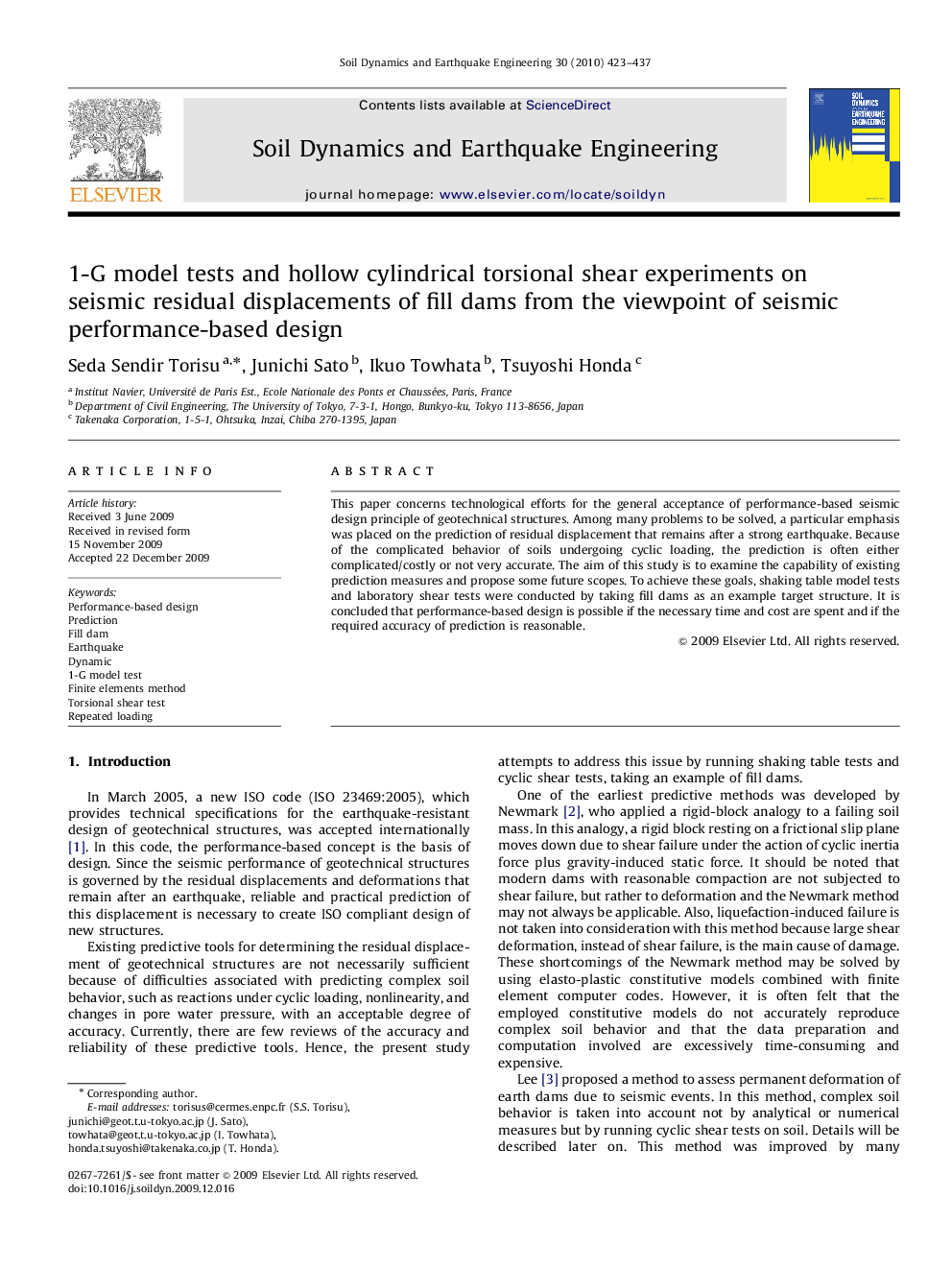| کد مقاله | کد نشریه | سال انتشار | مقاله انگلیسی | نسخه تمام متن |
|---|---|---|---|---|
| 304969 | 512843 | 2010 | 15 صفحه PDF | دانلود رایگان |

This paper concerns technological efforts for the general acceptance of performance-based seismic design principle of geotechnical structures. Among many problems to be solved, a particular emphasis was placed on the prediction of residual displacement that remains after a strong earthquake. Because of the complicated behavior of soils undergoing cyclic loading, the prediction is often either complicated/costly or not very accurate. The aim of this study is to examine the capability of existing prediction measures and propose some future scopes. To achieve these goals, shaking table model tests and laboratory shear tests were conducted by taking fill dams as an example target structure. It is concluded that performance-based design is possible if the necessary time and cost are spent and if the required accuracy of prediction is reasonable.
Journal: Soil Dynamics and Earthquake Engineering - Volume 30, Issue 6, June 2010, Pages 423–437